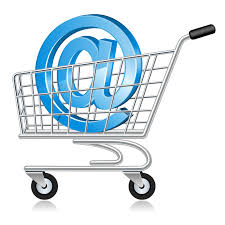What Is The Role Of Technology In Achieving Last Mile Success?
One of the biggest challenges for a delivery provider is achieving a successful delivery drop first time and missed deliveries are costly – estimated on average at around £23 per drop. Using mobile data technology to track items combined with proactive...

Barclays have recently published an interesting report, The Last Mile*, which explores the online purchasing and delivery journey. Its findings highlight that e-commerce is booming in the UK, with 1 billion deliveries made in 2013 for products ordered online. This is expected to rise to 1.35 billion within the next 5 years and could potentially reach even higher numbers if delivery options were improved and more convenient. 45% of shoppers said they would be prepared to buy more goods online if delivery services were better.
Throughout this research one theme continued to dominate – the relevance of technology and its contribution to service excellence. With the technology landscape constantly changing and consumer behaviours constantly evolving, it’s all too easy to lose customers at the last mile – so how do you ensure a positive and successful delivery experience? It was suggested that carriers need to evolve their propositions by investing in technology to offer consumers greater flexibility and convenience, which is a key part of achieving last mile success. As the authors highlighted, the ‘winners will be those that add value for the retailer by offering flexibility of delivery, state of the art technology and efficient return services.’
One of the biggest challenges for a delivery provider is achieving a successful delivery drop first time and missed deliveries are costly – estimated on average at around £23 per drop. Using mobile data technology to track items combined with proactive customer alerts plays a significant role in helping to achieve higher first time success rates. Within the UK, rural areas are the fastest growing in terms of their consumption of goods purchased online. This again highlights the need for technology to enable greater efficiencies and cost savings to be made. Rural deliveries are more time consuming and the number of drops possible in a day is lower, which further increases the need for greater first time success rates. If a missed delivery costs £23 per drop on average, it is likely to be greater in rural areas because fewer drops are possible during any given shift.
Deliveries also need to become more flexible, allowing customers to adapt the requested drop off points to suit their changing circumstances. Again technology plays an integral role by allowing a customer to switch a delivery address, potentially in real-time, which avoids the cost of a driver making a failed delivery attempt.
One of the most obvious service enhancements a delivery provider can offer a customer is to provide a delivery time that is accurate to within one hour. This is relatively straightforward to implement and acts as a significant service differentiator. Currently DPD is the most notable delivery provider offering this as standard and has reported an increase in the number of deliveries completed first time, which in turn means reduced costs and a positive delivery experience for the consumer. In addition, its customers have reported a corresponding uplift in sales volumes, which reinforces earlier findings that consumers will be loyal and are willing to order more online if the delivery process is convenient.
But whilst all the evidence highlights the important role technology plays in enhancing the delivery experience, resistance to investment continues, as highlighted by the results of another survey conducted by DA Systems. Logistics providers as a whole are optimistic about the commercial opportunities presented by continuing growth in the online shopping industry but are less ready to make the investments needed in delivery service enhancing technology.
The survey conducted earlier in 2014 showed that although attitudes towards the role of technology in enabling service improvements were positive, budget restrictions could actually create a technology capability gap amongst delivery providers, especially within the SME community. This is because of the difficulty getting access to the financial and operational backing required. In turn, the lack of investment capital available, means companies are unable to implement technology to enable one-hour delivery window notifications and other process improvements.
In the Barclays study, improving tracking capabilities and introducing SMS and email alerts for customers were at the top of delivery providers’ wish lists. DA Systems’ research corroborates this with 70% of survey respondents saying they wanted to introduce delivery notifications and a further 41% wanted to offer customers the flexibility to change delivery locations. But whilst the interest is high, this could simply be wishful thinking. 88% of companies participating in the research agreed that technology was an essential source of competitive differentiation and yet over 50% of respondents revealed that they have yet to introduce real-time track and trace capabilities, which is an essential foundation for improving customer service. And why? 80% of respondents said the reason for not making these investments was down to budget restrictions.
These findings point to a greater issue to overcome, in that delivery providers may not appreciate the connection between adopting technology and the potential to cut operating costs. In addition, having technology in place improves a business’ ability to scale and cope with peak periods. This was another finding of the Barclays study, which reported that a key threat facing delivery companies was an inability to quickly and cost effectively achieve capacity increases during busy times.
Plenty of technological innovation is literally ‘just around the corner’ in terms of its arrival for delivery service providers to consider adopting in the future - smart glasses are a good example. Consumers are increasingly demanding speed, convenience and control – they want to receive their purchases faster and this demand is forcing the hand of the retailer to meet that need or they will shop elsewhere to one that can. There is a large array of proven technology, like personalised delivery notifications, which if introduced, will enable them to see almost immediate operational benefits and keep customers satisfied too.
As the Barclays study concluded, keeping abreast of new technology developments will be necessary if delivery providers wish to become more customer service orientated and cost efficient. And keeping up-to-date with new developments will be essential to remain competitive in the long term. In fact where technology is concerned, it’s not really a question of ‘can I afford to have it’, but ‘can I afford not to have it?’


